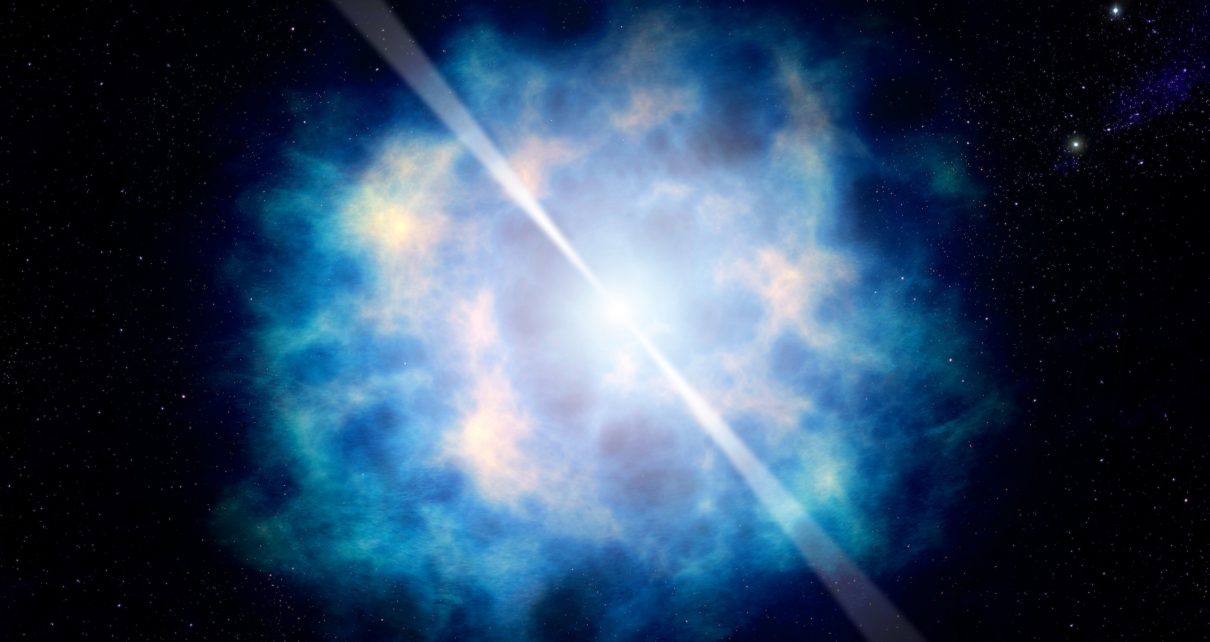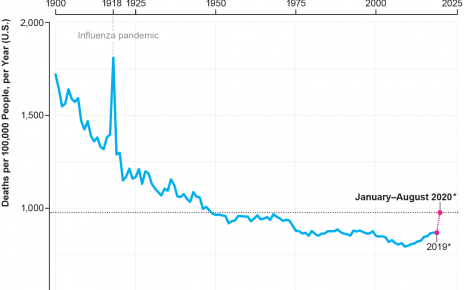Flashes of radio waves lasting a thousandth of a second arrive on Earth every second from all over the sky. What makes them? We do not know. It is exciting to try and figure it out.
The frequency-dependent arrival time of these fast radio Bursts (FRBs) indicates a delay by a volume of electrons greater than the Milky Way can account for, and suggests that they originate much farther away—from the universe at large. Indeed, some of them have been localized to individual galaxies at cosmological distances from us. Most bursts do not repeat, but each of them is not very different from the repeating pulses detected from magnetized neutron stars (pulsars) in our own galaxy. Yet since FRBs originate at a distance that is 100,000 times bigger, the intrinsic radio power of FRB sources is 10 billion times greater than that of a typical pulsar. Dani Maoz and I have argued that if an FRB occurred in the Milky Way, we could detect it with a cell phone.
Astronomers tend to associate new phenomena with known objects. Indeed, the most popular model relates FRBs to young neutron stars with an exceedingly strong magnetic field, called magnetars, to explain their extraordinary radio brightness. If these radio emissions originated from a hot surface, the required temperature would be 1035 (one followed by 35 zeros, or a hundred decillion) degrees Kelvin! Of course, there is no surface in nature that hot. But it is possible to generate this extreme brightness through “coherent emission”—many electrons bunching up and radiating in phase rather than independently. This is what happens in a radio antenna that broadcasts loudly when driven by an artificial electron current.
Coherent emission also occurs in pulsars through a mechanism that is not fully understood. But putting aside our ignorance about the pulsar mechanism, Julian Munoz, Ravi Vikram and I have suggested that young magnetars might produce powerful radio pulses as FRBs and later fade into their weaker incarnations, as they age and join the known population of pulsars. Recently, a powerful radio flare was observed by the STARE2 radio array from a magnetar in the Milky Way. Although it demonstrated that magnetars can produce radio bursts, the observed radio flare was still fainter than needed to explain the incredible power of the most distant and abundant FRBs.
While most of the FRBs do not repeat, a few do. And two of these repeating FRBs have shown an unexpected periodicity in their active phases. The activity of FRB 121102 has been reported to occur in windows of time consistent with a tentative period of 157 days. This period is about 10 times longer than the 16-day period exhibited by another periodic source, FRB 180916.J10158+65, discovered by the CHIME telescope in Canada.
The most natural explanation for months-long periodicity would be that the FRB source orbits around a companion object and its radio beam is directed at Earth only during a fraction of its orbit, like a lighthouse beam that seems to flash as it passes your line of sight. A conservative interpretation would involve a young neutron star orbiting a companion star. However, neutron stars are born out of the collapse of stars weighing more than eight times the sun. The massive progenitor star loses most of its mass in the supernova explosion that gives birth to the neutron star. If the progenitor had a sunlike companion star, that companion would fly out of the system after the explosion because its pre-supernova orbital speed would have been too large for it to remain gravitationally bound to the lightweight neutron star remnant. The companion could have stayed in the system only if it was very massive.
However, if the FRB source is not a neutron star, then there is another interesting possibility: its companion could be a sunlike star. An orbital period of 157 days around the sun would mimic a planet with an orbital radius that is halfway between Venus and Mercury. If the FRB source emits a pair of beams in opposite directions, 157 days would correspond to half of the orbital period—in which case the orbital radius would be similar to that of the Earth around the sun. This is an intriguing regime, consistent with the FRB signal originating from a transmitter produced by a technological civilization based on a planet in the habitable zone around a sunlike star.
Most stars are much less massive than the sun. An example is our nearest neighbor, Proxima Centauri, a dwarf star that hosts a habitable planet, Proxima b, with an orbital period of 11 days. Interestingly, the orbital period characteristic of the habitable zone around a dwarf star is not very different from the 16-day period exhibited by FRB 180916.J10158+65. Many such planets are “tidally locked”: one side is permanently facing the star, the other facing out into space. Once in each orbital period, this planet would show us its permanent dayside—the side where stellar power could be harvested by photovoltaic cells.
Clearly, an advanced civilization would not attempt to communicate across cosmological distances, because waiting for a reply would require billions of years. Instead, a powerful radio beam could be used for military purposes or might be generated to push a light sail and launch a massive cargo close to the speed of light. We explored the latter possibility with Manasvi Lingam in 2017 and concluded that it entails harnessing all the solar power intercepted by a planet like the Earth in the habitable zone around a star like the sun. This sounds like an unrealistic ambition for our own civilization. But despite what many of us might have heard from our parents, we might not be the smartest kids on the block after all.



